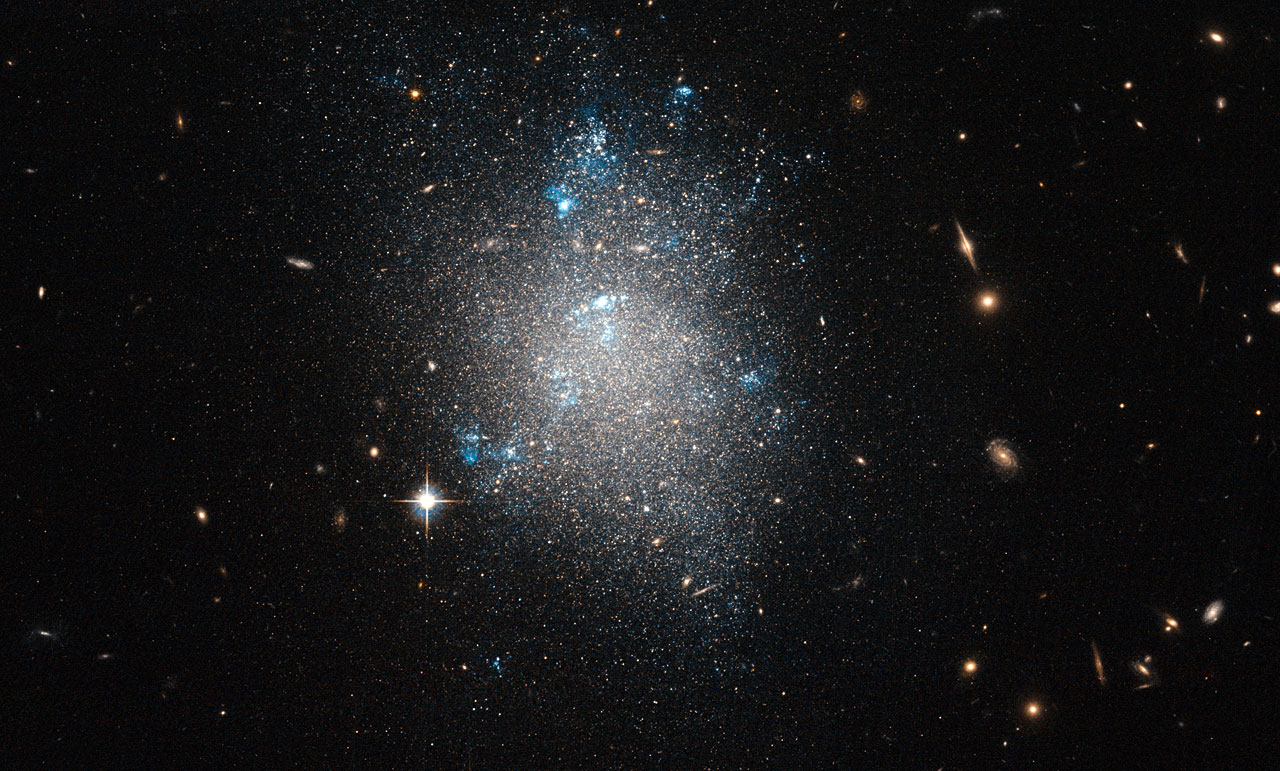Scientists studied the data of the astronomical survey of the sky and found the faintest satellite of the Milky Way. It is practically invisible because it has a diameter of only 10 light-years, and it cannot even be considered a galaxy. It’s just a small cluster.

Nearly invisible satellite
Astronomers have found a satellite of our Galaxy that is so dim that it can almost be considered invisible. The survey of the Northern Hemisphere of the sky in the ultraviolet, near infrared and visible bands of the UNIONS helped them in this.
After analysing data from the survey of the Northern Hemisphere of the sky with the Ultraviolet Near Infrared Optical Northern Survey (UNIONS), an international group of astronomers has discovered a new compact satellite of the Milky Way, designated Ursa Major III/UNIONS 1.
UNIONS is a program that aims to study the structure of the Milky Way. Two telescopes scan a huge area of the sky with an area of 4800 square degrees to do this. The first of these astronomical instruments is the Canada-France-Hawaii Telescope (CFHT), and the second is the Panoramic Survey Telescope and Rapid Response System (Pan-STARRS).
A large number of much smaller star systems are circling around the Milky Way. Most of them have been known for a long time. However, scientists are still finding more and more dwarf galaxies and clusters. This time, a team led by Simon E. T. Smith from the University of Victoria in Canada was lucky to find something called Ursa Major III/UNIONS 1.
What is Ursa Major III/UNIONS 1
The almost invisible satellite of our Galaxy received such a strange name in accordance with the established rules. This is the third dwarf galaxy in the vicinity of the Milky Way, found in the corresponding constellation.
Although at first, it was generally defined as a group of gravitationally bound stars. The fact is that its absolute stellar magnitude, that is, the apparent size that it has at a certain distance, is the minimum among all discovered ones. It is only 2.2m.
The team first identified Ursa Major III/UNIONS 1 as a spatially-resolved over-density of stars in the UNIONS data. Then she received radial velocities from the Keck telescope and its own motions from the ESA’s Gaia satellite, which confirmed that it is a coherent system.
As stated in the article, Ursa Major III/UNIONS 1 is very compact, since it has a radius of about 10 light-years and contains only about 50-60 stars. Therefore, its total mass is also minimal and is only 16 solar masses.
The results show that the orbit of Ursa Major III/UNIONS 1 has a pericenter of 41,700 light-years. The data also indicate that its age is at least 11 billion years old, and the stars in it are poor in metals.
According to phys.org
Follow us on Twitter to get the most interesting space news in time
https://twitter.com/ust_magazine


